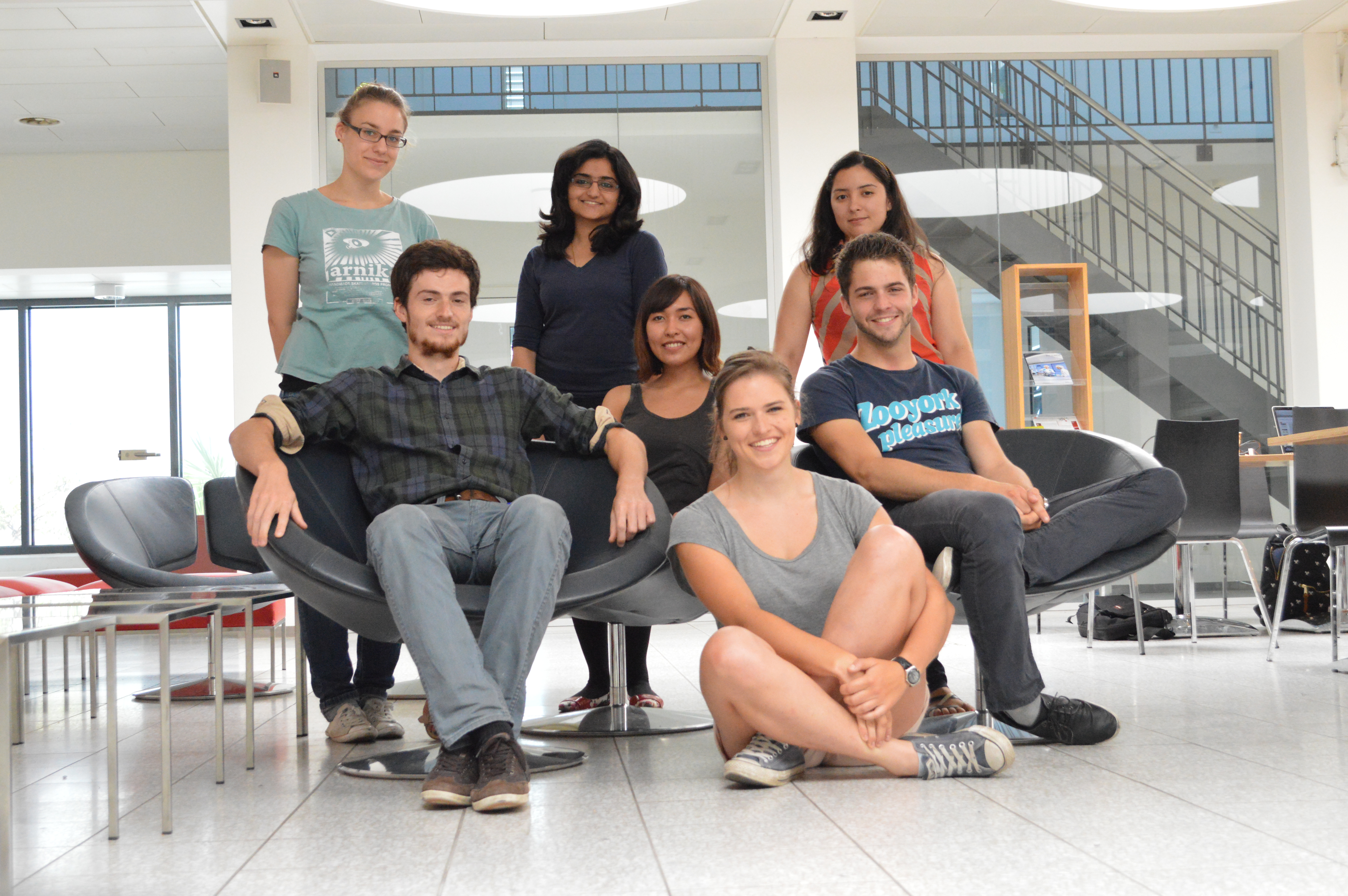|
|
| Line 25: |
Line 25: |
| | | | |
| | <li> | | <li> |
| - | <a href="/Team:ETH_Zurich/Experiments_7"><img src="https://static.igem.org/mediawiki/2013/3/34/Hydroall.png"/></a> | + | <a href="https://static.igem.org/mediawiki/2013/5/54/2013-09-16_09.30_%281%29.png"/></a> |
| | <p style="font-size:15px"><b>Hydrolase Reactions</b><br> Enabling a fast interaction with our system,the hydrolytic enzymes generated as a signal response are an important feature of our game. We used Alkaline Phosphatase(PhoA), Beta-galactosidase(LacZ), Acetyl esterase(Aes), Glycoside hydrolase(NagZ) and Beta-glucuronidase(GusA) and their respective substrates to achieve fast and colorful outputs.</p> | | <p style="font-size:15px"><b>Hydrolase Reactions</b><br> Enabling a fast interaction with our system,the hydrolytic enzymes generated as a signal response are an important feature of our game. We used Alkaline Phosphatase(PhoA), Beta-galactosidase(LacZ), Acetyl esterase(Aes), Glycoside hydrolase(NagZ) and Beta-glucuronidase(GusA) and their respective substrates to achieve fast and colorful outputs.</p> |
| | </li> | | </li> |

-

Team
We are a team of seven Bachelor- and Master Students at the ETH Zurich with backgrounds in Biotechnology, Biomedical Engineering, Neurobiology and Bioinformatics. The iGEM project is located at the Department for Biosystems and Engineering in Basel.If you're around Basel, be sure to visit our team's lab to play some really fun Colisweeper!
-

From Minesweeper to Colisweeper
Almost all the features known from the original Minesweeper game can be found in Colisweeper as well. The gamefield is replaced by mine and non-mine colonies on a agar plate.Due to AHL communication and signal processing, they express different hydrolase enzymes. Through pipetting the colorless substrate solutions turn into different colors which indicates the role of the played colony. You always have the possibility to mark colonies as mines with flags using the second substrate solution.
-

Information Processing
Our non-mine cells are able to distinguish between different concentrations of AHL and to translate this information into the expression of different sets of enzymes. They use LuxR promoters with different sensitivities as highpass filters. The promoters were created using site-saturation mutagenesis. Through Mutation of the LuxR binding sites the affinities were changed successfully.
-
Hydrolase Reactions
Enabling a fast interaction with our system,the hydrolytic enzymes generated as a signal response are an important feature of our game. We used Alkaline Phosphatase(PhoA), Beta-galactosidase(LacZ), Acetyl esterase(Aes), Glycoside hydrolase(NagZ) and Beta-glucuronidase(GusA) and their respective substrates to achieve fast and colorful outputs.
-

The Model
We constantly tried to validate and improve our system using a spatio-temporal model.
-

Experiments
Starting with characterization of the AHL diffusion in agar plates we soon went on to test different sender and receiver-cell set ups using GFP as a readable output. In parallel the promoter mutagenesis and screening as well as the testing and characterizing of different substrates on the hydrolases was done.
-

Human practices
As a continuation of our laboratory project we analyzed the relationship between synthetic biology and games. For one thing synthetic biology can be used to play common games in a new way, possibly for educational purposes or as a basis for proof-of-principle experiments for new circuits. More recently synthetic biologists also started to use games as a research tool, an innovative approach to make use of crowdsourcing and distributed computing. We want to find correlations and discuss possible consequences for Synthetic Biology.
Colisweeper is an interactive, biological version of the Minesweeper computer game, based on luxI/luxR quorum sensing and chromogenic enzymatic reactions. The goal is to clear an agar “minefield” without detonating mines.
Genetically engineered Escherichia coli colonies are used as sender-cells (mines) and receiver-cells (non-mines). Mines secrete the signaling molecule N-(3-oxohexanoyl)-l-homoserine lactone (OHHL) whereas non-mines process the signal. To distinguish between OHHL-levels, a library of PLuxR promoters with various sensitivities was created through site-saturation mutagenesis. High-pass filters were constructed to control the expression of different orthogonal hydrolases in non-mines, depending on the number of surrounding mines.
Additionally, the mines express their own hydrolase.A spatiotemporal reaction-diffusion model was established to evaluate and improve the system. To play Colisweeper, a colorless substrate solution is pipetted onto a colony of choice. The result is a defined color change within minutes, allowing identification of the played colony and the number of mines surrounding it.
 "
"












